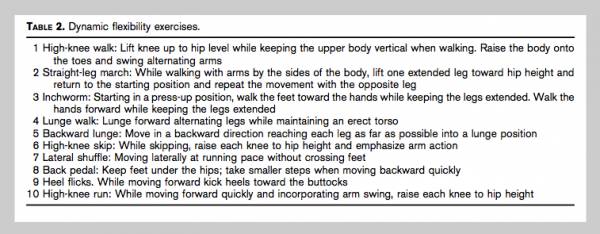Athletes use post-activation potentiation (PAP) to enhance performance by performing a brief, intense exercise just before the activity they want to improve. PAP has been a popular topic in the scientific research, and a recent study in the Journal of Strength and Conditioning Research addressed how coaches can make it more accessible to athletes.
Much of the science regarding PAP includes some sort of weight lifting element. For example, PAP works if you add a heavy version of a lift you’re about to do right before you perform the lift at lower weights. Researchers wondered if the effect held true if the performance variable was oriented toward non-weightlifting sports – in this case, a twenty-meter sprint.
The researchers examined the prevailing research to make sure their protocol was unique. They hoped to create a condition in which the potentiating exercise was even more accessible than weight lifting exercises like back squats. It’s not as if a back squat or similar exercise has equipment that is difficult to come by, but it does generally require a power rack, especially at the weights needed for PAP. For athletes out in the field with limited equipment, PAP isn’t always a practical option.
The researchers used depth jumps as the potentiating exercise. Previous research showed depth jumps work well as PAP for subsequent vertical leaps. Since there tends to be a strong correlation between sprinting and vertical leap ability, the researchers theorized that depth jumps might also be applicable for the twenty-meter sprint.
The researchers compared three different warm ups:
- A five-minute jog
- A five-minute jog plus dynamic stretches (see table below for detailed list of stretches)
- A five-minute jog, dynamic stretches, and three depth jumps

All of the warm ups produced progressively better performances on the twenty-meter sprint, but depth jumps won the day. The differences in performance after depth jumps were pretty substantial. For example, between the jogging warm up and the depth jump warm up, performance improved from 3.3 seconds to 3.1 on average. Consistent improvements like that could make or break an athlete’s career.
PAP works in numerous conditions, as this study demonstrated. Although there will be more studies involving various protocols to make things simpler for athletes, I’m mostly curious at this point if the PAP effect persists when applied consistently. If so, it should be a part of every athlete’s routine during every practice and game. Let’s stay tuned for that.
References:
1. Paul Byrne, et. al., “Acute Potentiating Effect of Depth Jumps on Sprint Performance,” Journal of Strength and Conditioning Research, 28(3), 2014.
Photo 1 courtesy of Shutterstock.






